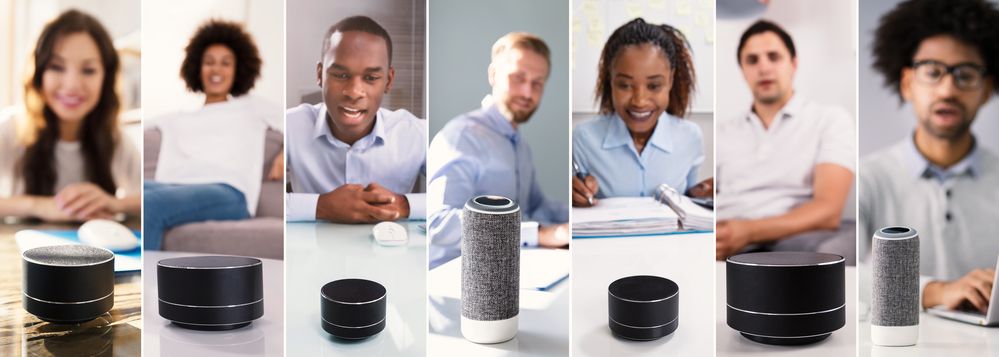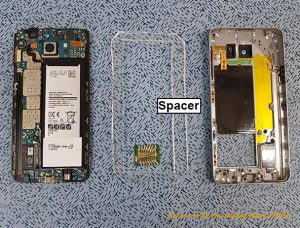
Well, But How Does It Recognize My Voice?
Using the rapidly growing internet network and constantly developing technology in recent years has become extremely enjoyable and beneficial for all of us. Social media, smartphones or personal supercomputers are the first to come to mind. But what is going on in the background for these super-intelligent technological devices to work smoothly? At this point, we can talk about the concept of IoT, which stands for the “Internet of Things”. This new concept is the smart connections used in smart technological devices that communicate with each other and enable the sensors to communicate with one another wirelessly. In other words, IoT is the ability of any object that we can think of, to access the internet and from there to stay in communication with other devices and provide data transfer.
IoT first started in 1991 when a researcher at Cambridge University shared coffee machine images on the internet via a camera system. In the past 30 years, this technology has reached its current state through many developments. Due to this technology, we can collect almost all information with appropriate sensors in our environment. In addition, we can use this information for numerous purposes. IoT gives us an advantage in the industrial field where IoT helps to ensure real-time data transfer by minimizing human error. The data received using IoT can be processed correctly and used in accordance with its purpose. Although we are not aware of this technology, we use it in many areas of our daily lives. To give a few examples of this system, we can talk about smart stops, address forwarding, sensing the environment, sensing and transferring sounds, and finally robot vacuums.
Various scientific studies have been carried out on the perception and discrimination of sounds, which is the main subject of our article. The common aspect of these studies is that the devices can first perceive the voice of any person and at the same time recognize this voice. IoT technology has also been combined with these devices, thus making them more useful.
Using the concept of IoT and machine learning, scientists from the Department of Material Science and Engineering, Korea Advanced Institute of Science and Technology (KAIST) developed a piezoelectric acoustic sensor for speech recognition. Conventional acoustic sensors have low sensitivity, short recognition distance, and low speaker recognition rates properties. However, this developed piezoelectric acoustic sensor by researchers from KAIST does not contain these negative features of conventional sensors, thanks to the existing technology.
The design idea of the sensor is inspired by the basilar membrane of the human cochlea. The acoustics sensor uses a simpler structure than the human cochlea structure that consists of a piezoelectric structure embedded in the membrane layer. Basically, sound waves produced by the speaker vibrate at resonance frequencies corresponding to regions of the piezoelectric membrane, and sound waves are separated into frequencies. Thus, the voice recognition process begins. Also, the sensor can produce its own power due to the piezoelectric structure. The sensor utilizes a machine learning algorithm, which gives it a 97.5% speaker recognition rate and 75% error reduction compared to the reference microphone. The sensor not only performs speech recognition but also has extraordinary structural features. For example, this sensor is ultra-thin, flexible, and capable of being miniaturized enabling it to be included in easy to adapt to devices of any size. In the photo on the right, you can see the acoustic sensor insertion into a smartphone.

In the near future. acoustic sensors will be able to be incorporated into smart home applications, mobile electronics, as well as virtual secretaries. In addition to these applications that readily come to mind, acoustic sensors will take their place in almost every part of our daily lives.
* Thanks to Mobile Application Developer Esra Didem Bayar for her writing assistance on IoT.
REFERENCES
- 1. Ercan, T. & Kutay, M. (2016). Endüstride Nesnelerin Interneti (IoT) Uygulamaları . Afyon Kocatepe Üniversitesi Fen Ve Mühendislik Bilimleri Dergisi , 16 (3) , 599-607.
- 2. Wang, H. S., Hong, S. K., Han, J. H., Jung, Y. H., Jeong, H. K., Im, T. H., ... & Lee, K. J. (2021). Biomimetic and flexible piezoelectric mobile acoustic sensors with multiresonant ultrathin structures for machine learning biometrics. Science Advances, 7(7).
- 3. Han, J. H., Bae, K. M., Hong, S. K., Park, H., Kwak, J. H., Wang, H. S., ... & Lee, K. J. (2018). Machine learning-based self-powered acoustic sensor for speaker recognition. Nano Energy, 53, 658-665.
- 4. https://www.sciencedaily.com/releases/2018/10/181004110103.htm
